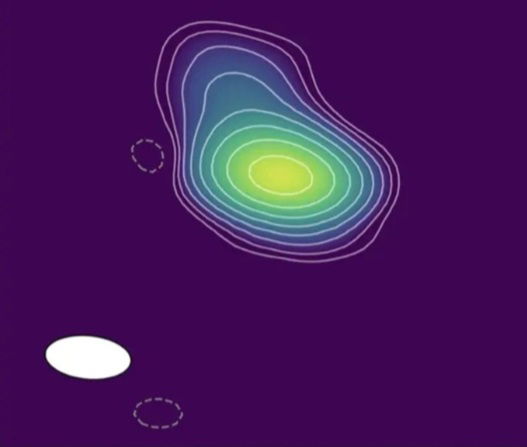
In a major breakthrough for astronomy, scientists have captured an incredibly detailed image of a powerful jet shooting out from a distant black hole.
This was made possible by connecting some of the world’s most advanced radio telescopes, including South Africa’s giant MeerKAT telescope, to form a telescope network almost as large as Earth itself.
This is the first time MeerKAT has joined forces with the European VLBI Network (EVN), the world’s most sensitive group of radio telescopes.
This global collaboration included telescopes from countries like Sweden, China, Germany, Italy, the Netherlands, South Korea, and the United Kingdom.
By working together and synchronizing their observations, they created the sharpest radio image ever captured of this kind of cosmic event.
MeerKAT, located in South Africa’s Karoo region, consists of 64 dishes, each 13.5 meters wide.
Though each dish is impressive on its own, when combined through a technique called Very Long Baseline Interferometry (VLBI), the network acts like a single telescope with a diameter of thousands of kilometers. This setup allows scientists to observe radio signals from space with unmatched detail.
The team focused their network on a faraway galaxy called J0123+3044. At the center of this galaxy is a supermassive black hole, which is ejecting a jet of energetic plasma into space. This jet glows brightly in radio wavelengths, making it a perfect target for this powerful global telescope.
What makes this image so special is that MeerKAT’s sensitivity added a major boost to the overall power of the network. With its 64 antennas working as one, MeerKAT is as powerful as a single telescope 100 meters wide.
According to Jun Yang, an astronomer at Onsala Space Observatory in Sweden, this dramatically improves the quality of the images and marks an important step forward in astronomy.
This achievement also shows the potential of future telescopes. Both MeerKAT and the EVN are precursors to the Square Kilometre Array (SKA) Observatory, a massive international project building two next-generation radio telescopes: SKA-Low in Australia and SKA-Mid in South Africa. The goal of the SKA is to explore the universe in even more detail, including the origins of galaxies, stars, and life itself.
Sweden is set to become a full member of the SKA Observatory. One major goal is to link SKA-Mid with other radio telescopes worldwide, just like this collaboration with MeerKAT. This success brings us one step closer to a future where scientists can explore the deepest corners of space by listening to the faint whispers of the universe.



